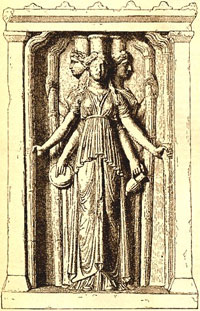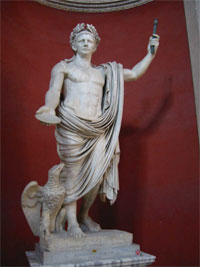The most accepted explanation for the word Trevi is that it derives for the Latin word Trivium that indicates a crossing of three streets.The Roman Goddes Trivia, epithet of Diana, the greek Hecate, was protecting the streets and often her statue featuring three heads was standind at the crossings.The three streets of Trevi are Via De' Crocicchi, Via Poli and Via Delle Muratte.The main statue of the fountain does not represent Neptune, but Ocean. In fact, Neptune has often a triton in his hands and a dolphin following him. Instead, as its designer Nicola Salvi wrote, the statue is an image of Ocean, the personification of a immense river that flows around the earth and from which all strams of water derive.Ocean was the son of Sky and Vesta. From his union with Thetis rivers and sources of water were born.The beard of Ocean is symbol of wisdom and power. The wand is short and thick, similar to the ones held by Roman emperors portraited in many ancient coins. The restless horse represents the violent strenght of the sea. The clam horse is instead symbol of tranquillity of the sea.The statue of Abundance holds the symbol of plenty, a horn filled with fruits and produce.Health is crowned with wreath of laurel, Apollo's plant. Apollo was the the father of Aesculapius, god of Medicine. Health (Salus in Latin, Hygieia in greek) was the daughter of Aesculapius.She was the goddess of health, cleanliness and sanitation. Her name is the source of the word "hygiene". Statues of Hygieia were created by Scopas, Bryaxis and Timotheus, among others, but there is no clear description of what they looked like. continues... |
Relief of three-headed Hekate from Aegina (in Roscher's Ausführliches Lexikon der Griechischen und Römischen Mythologie, 1890)
Emperor Claudius holding the wand, Vatican Museums, Rome |
|---|


